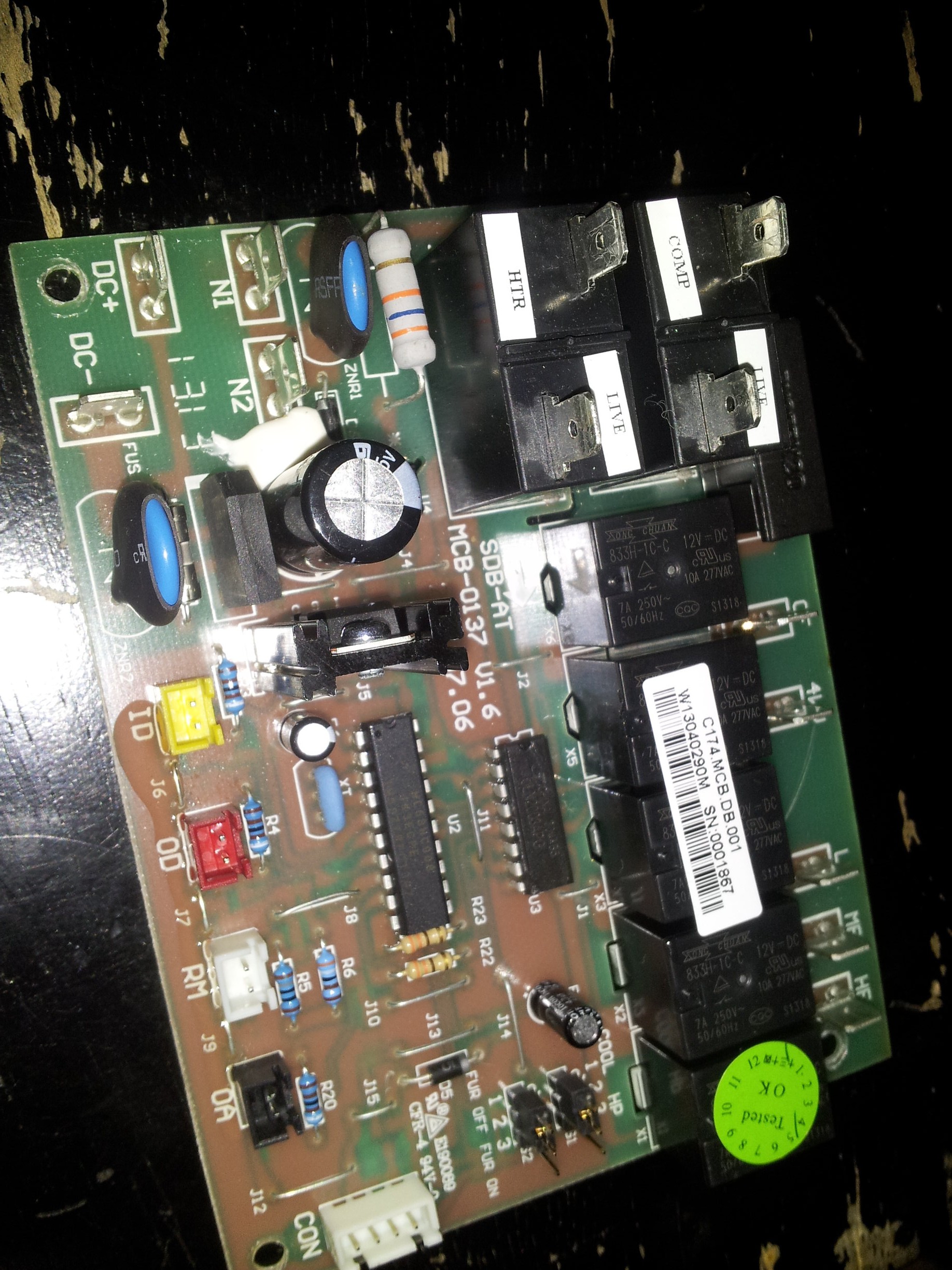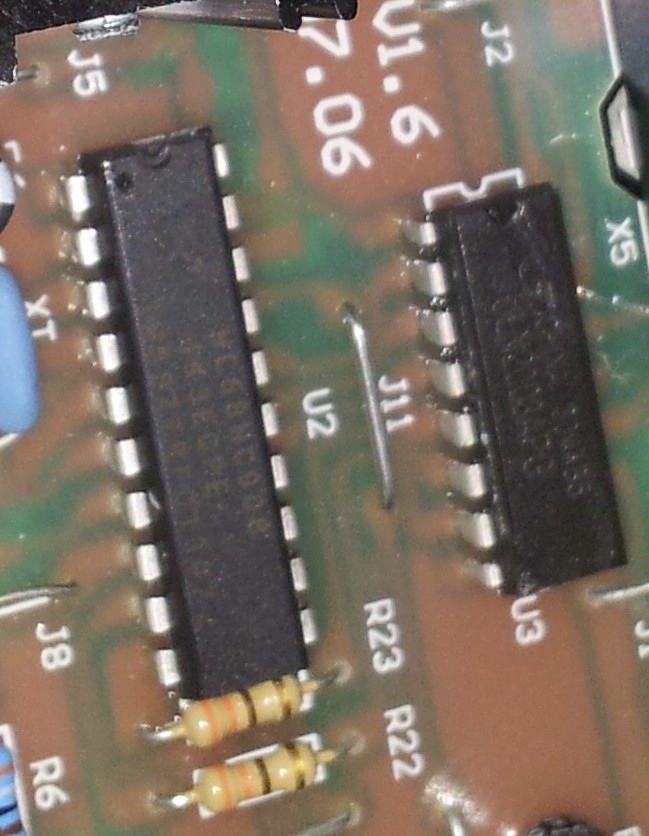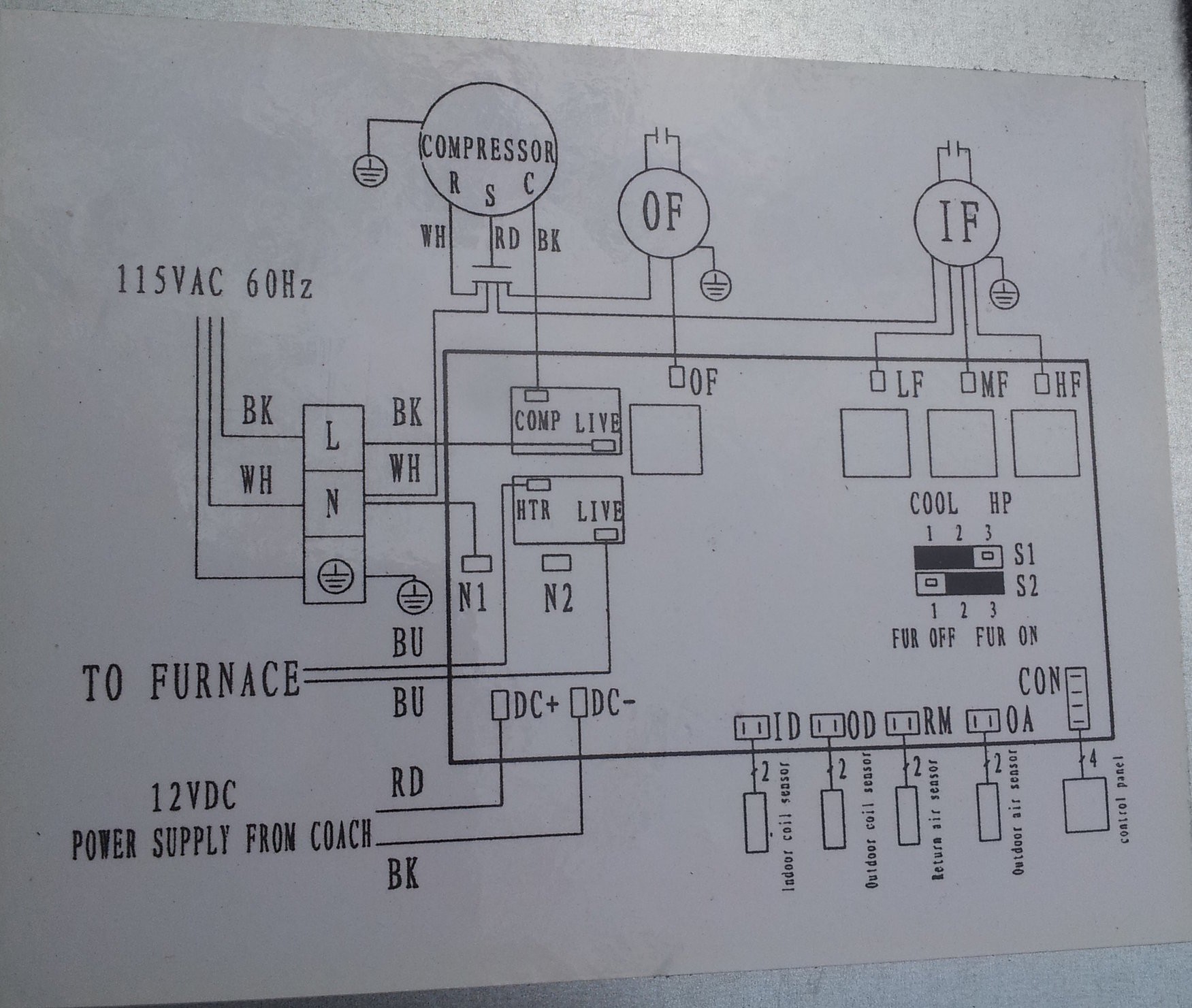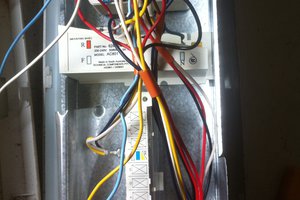 Original board removed from A/C. CON on far right of picture is the control box connection. ID, OD, RM, and OA are temperature sensor inputs either inline with it's respective coil (ID & OD) or air temp (RM & OA). Fur OFF/Fur ON and COOL/HP are option settings. Fur OFF/Fur ON is an option to control and electric furnace addon, and COOL/HP is an option for heat pump capable units (of which mine is not).
Original board removed from A/C. CON on far right of picture is the control box connection. ID, OD, RM, and OA are temperature sensor inputs either inline with it's respective coil (ID & OD) or air temp (RM & OA). Fur OFF/Fur ON and COOL/HP are option settings. Fur OFF/Fur ON is an option to control and electric furnace addon, and COOL/HP is an option for heat pump capable units (of which mine is not).

The MCU (Lower chip) is a Motorola MC68HC908 8-bit MCU. Top chip is a ULN2003APG Darlington driver array. The Darlington array drives the relays. The MCU commands the Darlington array.

Here is the wiring diagram of the system conveniently located on the inside of the access panel...
And you thought I did all of that detective work on my own! For shame!
 Daniel Roseman
Daniel Roseman
 PuriBottle
PuriBottle
 Boris van Galvin
Boris van Galvin

 TasosY2K
TasosY2K